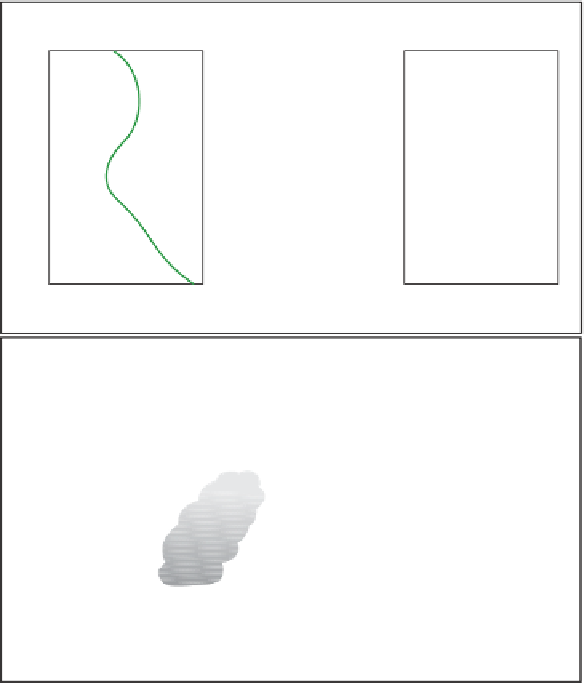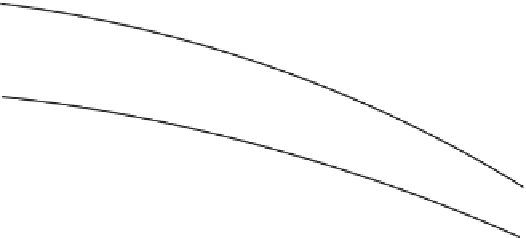Geoscience Reference
In-Depth Information
Figure 7.14
Structure of the Trade Wind
Inversion.
RH (%)
RH (%)
20
40
60
80
100
20
40
60
80
100
m
m
4000
4000
3000
3000
T
5°
Latitude
20°
Latitude
RH
T
2000
2000
1000
1000
RH
0
0
15
20
25
15
20
25
T (°C)
T (°C)
m
3000
2000
1000
0
5°
10°
15°
20°
25°
Latitude
form over the tropical seas where temperatures are above
27
Tropical cyclones
latitude
of the equator. Once developed, they move towards the
west within the trade winds, gradually increasing in
intensity. Before dying out the storm usually begins to
swing polewards. A few manage to maintain their identity
but they gradually decay and acquire the characteristics
of a mid-latitude depression. Many September storms
and floods in north-west Europe can be traced back to
Caribbean hurricanes.
Once started, the development of the hurricane is fairly
predictable in terms of flow in the middle levels of the
atmosphere and regional temperature patterns. But what
starts it off? In order for the cyclonic wind circulation to
develop, we must have air converging, which requires
some form of initial disturbance. It must also be
sufficiently far away from the equator, at least 5
C and that they do not form within about 5
Throughout much of the tropics one of the other main
Unlike its counterparts in middle latitudes, this system is
not large; instead it consists of a small, intense, revolving
storm with cloud bands spiralling away from its centre,
usually containing heavy squalls of rain, thunderstorms
and even tornadoes (
Figure 7.16
).
It goes under a variety
of names: 'hurricane' in the Caribbean and the United
States, 'typhoon' in the Pacific and 'cyclone' in the Bay of
Bengal. To qualify as a hurricane, the storm must contain
winds reaching over sixty-three knots (32 m s
-1
). Less
intense storms are called tropical cyclones or tropical
storms.
If we look at the parts of the globe affected by these
cyclones, it is apparent that they develop only over the
warmer parts of the oceans (
Figure 7.17
).
In each
hemisphere it is during the summer and autumn seasons
that cyclones are most likely to strike.
Despite the danger and damage of hurricanes, we know
surprisingly little about their origins, except that they all
, to allow
the Coriolis force to divert the inflowing air flow and
initiate rotation. We do find a variety of small disturbances
within the tropics where vertical movements and rotation
can be started. As they are small in size and found over
the seas, their location is difficult to determine. Once the














































































